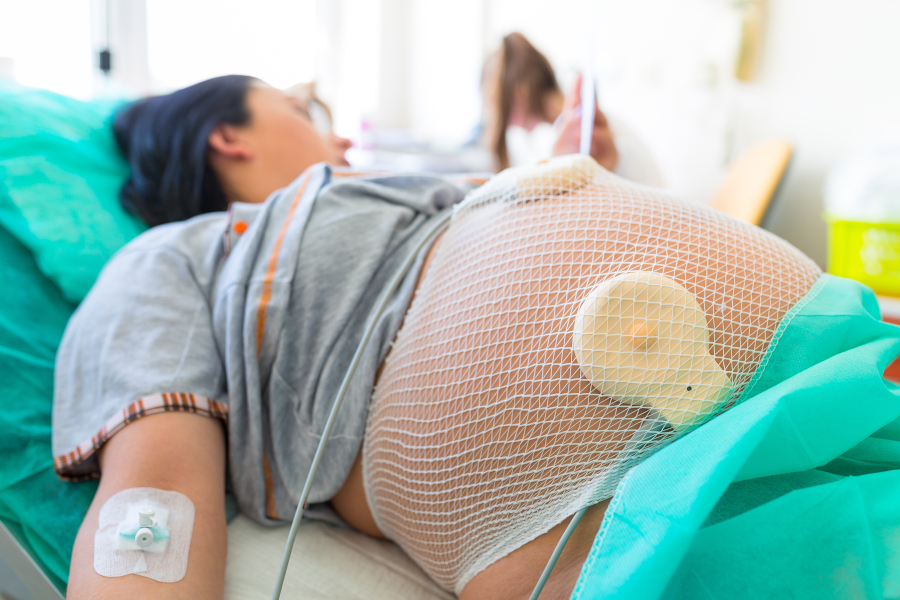Expecting twins brings double the excitement. It involves important decisions, including the choice between a vaginal or cesarean birth. In this article, we will discuss some different birthing options for twins, the factors that influence this decision, and the key considerations for expectant parents.
Understanding the Options
- Vaginal Birth of Both Twins (Unassisted): This option involves delivering both twins vaginally without medical interventions. It is an option if both twins are in the head-down position (vertex) and there are no other complications.
- Vaginal Birth of the First Twin, Cesarean section for the Second (VBAC2): In some cases, the first twin is positioned head-down (vertex), making a vaginal birth feasible. If the second twin is presented with the buttocks first (breech) or encounters complications during the delivery of the first twin, a cesarean section may be performed for the second twin.
- Cesarean Birth (C-Section): A cesarean section is a surgical procedure in which the babies are delivered through an incision made in the mother’s abdomen and uterus. This method is often chosen if there are complications, such as both twins being in breech position, concerns about the babies’ health, or other medical indications.

Factors Influencing the Decision
Several factors influence the choice between a vaginal delivery or a cesarean section birth for twins:
- Position of the Twins: The position of each twin plays a significant role. If both babies are in the head-down position (vertex), a vaginal birth may be considered safer and more feasible. If one or both twins are in a buttocks first position (breech), a cesarean section might be recommended.
- Gestational Age: The gestational age of the twins is crucial. Preterm twins may require a cesarean section due to potential complications associated with vaginal delivery.
- Health of the Babies: The health of each twin and any potential complication or medical condition will influence the birth method. If one twin has a health issue that necessitates immediate medical attention, a cesarean section may be chosen.
- Previous Birth History: The mother’s history of a prior cesarean section can impact the decision. It is not uncommon to have a cesarean section if an earlier delivery was done by that method. A history of a successful vaginal birth after a cesarean (VBAC) may make a vaginal birth for twins feasible.
- Hospital Policies and Practices: Hospital policies and practices regarding twin births, including the availability of skilled healthcare providers for vaginal twin births, can affect the options available to expectant parents.
- Personal Preferences: The preferences and values of the parents also play a role. Some parents may have strong preferences for one method over the other based on their beliefs and experiences.
Considerations for Each Option

Vaginal Birth of Both Twins (Unassisted):
- Pros:
- Generally quicker recovery compared to a cesarean section.
- Lower risk of surgical complications.
- Opportunity for immediate skin-to-skin contact with both babies.
- Cons:
- Requires both twins to be in the head-down position.
- Potential complications during the delivery of the second twin.
- Longer labor may be more tiring.
Vaginal Birth of the First Twin, Cesarean for the Second (VBAC2):
- Pros:
- Allows for a vaginal birth experience for the first twin.
- May be a reasonable compromise if the second twin encounters complications.
- Cons:
- Second twin may face a higher risk of respiratory distress syndrome (RDS) due to the timing of delivery.
- Requires careful monitoring and skilled medical providers.
Cesarean Birth (C-Section):
- Pros:
- May be necessary for certain medical conditions or complications.
- Controlled and planned procedure.
- Reduced risk of complications during delivery.
- Cons:
- Longer recovery time compared to a vaginal birth.
- Risk of surgical complications.
- Limited immediate skin-to-skin contact with the babies.
Choosing between a vaginal or cesarean birth for twins is a significant decision, influenced by a variety of factors. It is crucial for expectant parents to have open and thorough discussions with their healthcare provider to understand the options available and the potential risks and benefits associated with each method.
The goal is to ensure the safe and healthy delivery of both babies, taking into consideration their positions, gestational age, and any medical conditions. The decision should be a collaborative one, made in consultation with healthcare professionals, based on the best interests of both the mother and the babies. By being informed and prepared, expectant parents can approach the birth of their twins with confidence and peace of mind.
This information is presented as a general guide to present information on twin birth options. It is for informational purposes only. The information provided is not intended to be the only information available about twin birth options. The material provided is not expected to be a substitute for advice or information from your physician or health care provider.
If you have any questions, concerns, fears, apprehensions, unease, or worry about twin birth options contact your health care provider immediately.



